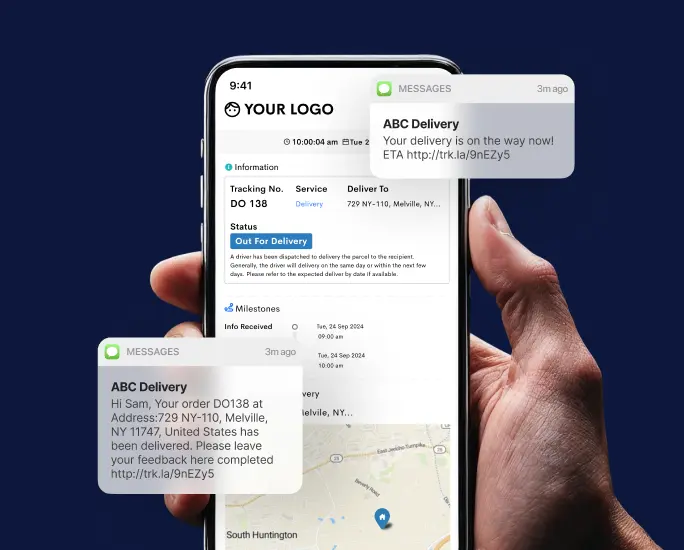Transporting medication isn’t just about getting a package from point A to point B. It’s about delivering life-saving treatments, ensuring vaccines stay effective, and maintaining the safety of sensitive pharmaceutical products. If a single step in this complex process goes wrong, the consequences can directly affect patient health. So, how can you ensure reliable and safe medication transport? Let’s explore some essential strategies to help you confidently navigate this critical task.
1. Know the Rules – Regulatory Compliance is Key
When it comes to medication, you can’t wing it. Strict regulations dictate how pharmaceutical products should be transported, and for good reason—improper handling could lead to unsafe or ineffective medications reaching patients.
Different countries and regions have guidelines, and it’s your job to know them inside and out. For example, in the U.S., the FDA and the Department of Transportation (DOT) set strict protocols for how medications are labeled, packaged, and shipped. It might sound like a hassle, but staying compliant is non-negotiable. The good news? Once you’ve nailed down these requirements, you’ll have a solid foundation to ensure the safe delivery of medications.
2. Choose the Right Packaging
You wouldn’t toss delicate glassware into a flimsy box, right? The same principle applies to medications. They need the right packaging to protect them from damage, contamination, and even temperature changes. This is especially important for temperature-sensitive meds like vaccines and insulin, which can be ineffective if they aren’t kept within a specific temperature range.
Insulated shipping boxes, refrigerants, and temperature monitors are your best friends here. You’ll want packaging with thermal insulation or even active cooling systems for cold chain medications (those that need to stay cold). And don’t forget—protection from physical damage is just as important. Ensure your packaging is robust enough to withstand bumps along the way, whether the meds travel by road, air, or sea.

3. Use Real-Time Monitoring to Keep an Eye on Things
Wouldn’t it be great if you could keep tabs on your shipment every step of the way? Well, you can. Real-time tracking and monitoring systems have revolutionized how medications are transported. These systems give you up-to-the-minute updates on the location of your shipment, the temperature inside the packaging, and even the humidity levels.
With real-time monitoring, you’ll know instantly if something goes wrong—like if the temperature drops below what’s safe for the medication. This allows you to act fast and adjust before it’s too late. Plus, tracking provides transparency and peace of mind for everyone involved, from the logistics team to the healthcare providers waiting for the delivery.
Platforms like Detrack offer advanced tracking tools that help you monitor shipments in real-time, making it easier than ever to ensure medications arrive in perfect condition. Knowing exactly where your shipment is and how it’s doing reduces guesswork and minimizes the risk of delivery issues.
4. Master Cold Chain Management
Maintaining a cold chain is non-negotiable when transporting temperature-sensitive medications. Cold chain management means keeping your product within a specific temperature range from start to finish, and even a slight deviation can lead to catastrophic results—think spoiled vaccines or ineffective biologics.
Work with logistics providers specializing in cold chain transportation to keep things running smoothly. These experts know how to handle delicate pharmaceutical products and have the right equipment—like refrigerated trucks and warehouses—to ensure your shipment stays within the required temperature range.
It’s also crucial to have contingency plans in place. What if the refrigeration unit fails? What if a shipment is delayed due to weather? By planning, you can ensure your cold chain stays intact even when the unexpected happens.
5. Partner with the Right Logistics Providers
Not all logistics providers are created equal—especially when transporting medications. Choosing a provider with experience in pharmaceutical logistics can make all the difference. They’ll deeply understand the complexities involved, from regulatory requirements to the infrastructure needed for temperature-controlled shipping.
When vetting logistics providers, ask about their experience with the specific medications you’re transporting. Do they know how to handle cold chain shipments? Do they have contingency plans in place for delays or emergencies? Choosing the right partner reduces the chances of delays, damage, or spoiled medications and ensures that your shipment is in expert hands.

6. Train Your Team – Knowledge is Power
Your logistics team is on the front line of ensuring safe medication transport. They need to know how to handle pharmaceutical products correctly, from maintaining cold chain integrity to managing hazardous drugs. Proper training is crucial for everyone involved, whether warehouse staff or delivery drivers.
Regular training sessions should cover best practices for handling medications, what to do in case of emergencies, and how to use tracking and monitoring equipment. It’s not just about handling the products—understanding hygiene protocols, packaging requirements, and regulatory compliance is just as important.
Keeping your team well-informed and up-to-date reduces the risk of errors and ensures that medications are handled safely from start to finish.
7. Optimize Route Planning for Timely Deliveries
When it comes to medication transport, timing is everything. Delays can mean between a medication arriving safely or spoiling in transit. This is where smart route planning comes into play. Using route optimization software, you can reduce delays and improve efficiency by finding the fastest, most reliable delivery paths.
Automated dispatching tools can help you assign vehicles and drivers based on real-time traffic data, ensuring that medications reach their destinations on time. These tools also allow for quick re-routing in case of road closures or other disruptions, so your shipment doesn’t get stuck halfway through its journey.
8. Prepare for the Unexpected with Emergency Protocols
No matter how well you plan, things can still go wrong—a vehicle breakdown, extreme weather, or equipment failure. That’s why having emergency protocols in place is essential. Make sure you have backup plans for when things go off course, like alternative routes, spare refrigeration units, or a backup logistics provider in case of last-minute issues.
By being proactive and having clear, well-thought-out protocols, you’ll be able to handle challenges quickly without compromising the safety of the medications.
Wrapping It Up
Transporting medication is more than just logistics—it’s about ensuring that life-saving treatments arrive safely, on time, and in the best possible condition. By following these strategies—knowing regulations, choosing the right packaging, utilizing real-time monitoring, mastering cold chain management, and more—you can minimize risks and ensure safe, reliable medication transport every time.
The next time you’re responsible for shipping sensitive medications, you’ll know exactly how to keep them safe throughout their journey!










